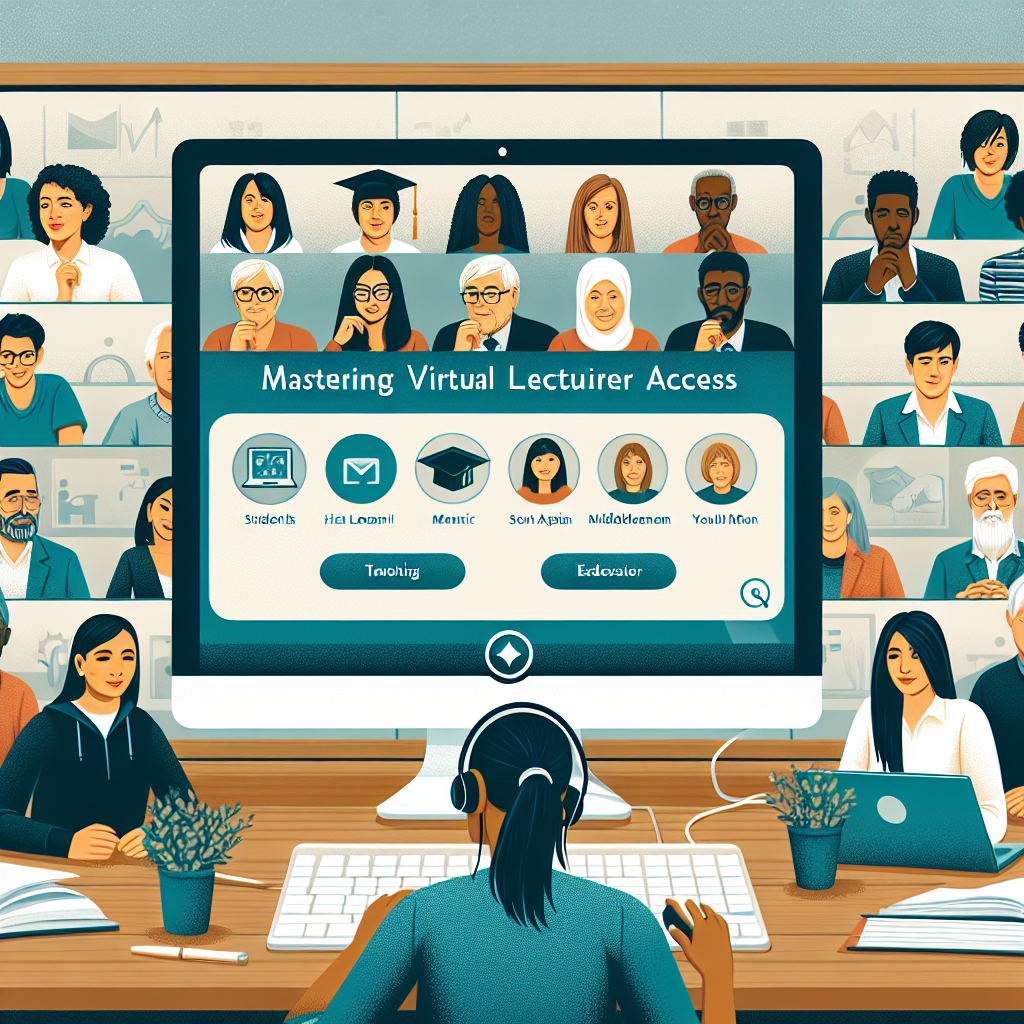Introduction to Virtual Lectures Access
In today’s rapidly evolving educational landscape, the ability to access virtual lectures is essential for both students and educators. This virtual lectures access tutorial is designed to guide you through every step required to make the most of online learning environments. Whether you’re new to e-learning platforms or seeking advanced tips for seamless virtual classroom access, this tutorial provides practical advice, technical know-how, and best practices for success.
With the increasing adoption of remote education, distance learning, and e-learning technologies, understanding how to securely and efficiently access virtual lectures is more important than ever. Through this comprehensive tutorial, you’ll gain the skills needed to thrive in digital classrooms, utilize online resources effectively, and enhance your overall learning experience.
Setting Up Your Virtual Classroom Environment
Before diving into your first virtual lecture, it is crucial to create an optimal learning space. Here are some steps to set up your virtual classroom environment:
- Reliable Internet Connection: Ensure you have a stable and fast internet connection to prevent disruptions during live lectures or streaming sessions.
- Device Compatibility: Use a laptop, tablet, or desktop computer that meets the recommended specifications of your chosen learning platform.
- Audio and Video Equipment: Invest in a good-quality headset and webcam to participate actively in video conferences and discussions.
- Distraction-Free Zone: Set up your workspace in a quiet area to maintain focus and minimize interruptions.
Step-by-Step Guide: Accessing Virtual Lectures
-
Log in to Your Learning Management System (LMS):
Most institutions use platforms like Moodle, Blackboard, or Canvas. Enter your credentials to access your dashboard, where you can find information about upcoming lectures, recorded sessions, and study materials.
-
Locating Your Virtual Lecture:
Navigate to the “Courses” or “Schedule” section. Look for links labeled as “Live Session,” “Webinar,” or “Virtual Lecture.” These links are often accompanied by the date and time.
-
Joining the Session:
Click on the provided meeting link. You may be redirected to a platform such as Zoom, Microsoft Teams, or Google Meet. Follow the prompts to join the session, enabling both your microphone and camera if required.
-
Participating in the Lecture:
Use the chat function to ask questions, and utilize interactive features like polls and breakout rooms for group discussions. Active participation enhances understanding and retention.
-
Accessing Recorded Lectures:
Missed a live session? Most platforms offer recorded lectures for asynchronous learning. Check the “Recordings” or “Archive” section for playback options.
Best Practices for Effective Virtual Learning
Maximizing your experience with virtual lectures involves more than just logging in. Here are some best practices to enhance your virtual classroom engagement:
- Be Punctual: Log in a few minutes before the scheduled start time to troubleshoot any technical issues.
- Stay Engaged: Ask questions, take notes, and contribute to discussions to stay involved during the session.
- Organize Materials: Keep digital notes, lecture slides, and assignments well-organized for easy reference.
- Use Collaboration Tools: Take advantage of digital whiteboards, screen sharing, and group chats to collaborate with peers and instructors.
- Respect Virtual Etiquette: Mute your microphone when not speaking and use the “raise hand” feature to participate in an orderly manner.
Troubleshooting Common Virtual Lecture Access Issues
Technical issues can disrupt your learning experience. Here are solutions to some of the most common problems encountered when accessing virtual lectures:
- Audio/Video Not Working: Check your device settings to ensure your microphone and camera are enabled. Restarting the application or device often resolves minor glitches.
- Connectivity Problems: Reduce bandwidth usage by closing unnecessary applications. If problems persist, consider connecting via Ethernet for a more stable connection.
- Login Issues: Use the “Forgot Password” feature if you can’t log in. Double-check your credentials and ensure your LMS account is active.
- Unable to Find Lecture Links: Contact your course instructor or technical support for direct assistance. Always check your email or LMS notifications for updated information.
Advanced Tips for Educators: Enhancing Virtual Lecture Delivery
Instructors play a pivotal role in creating engaging and inclusive virtual lectures. Here are some advanced strategies for educators:
- Interactive Content: Incorporate multimedia presentations, quizzes, and real-time feedback to keep students engaged.
- Personalized Learning Paths: Offer supplemental resources and differentiated assignments to cater to diverse learning needs.
- Monitor Participation: Use analytics tools provided by LMS platforms to track student attendance and engagement levels.
- Foster Community: Create online forums or discussion boards to encourage peer-to-peer learning and collaboration.
- Continuous Improvement: Gather feedback after each session and adapt your teaching methods based on student input and technological advancements.
Conclusion: Empowering Success in Virtual Learning Environments
Mastering virtual lectures access is a vital skill for both students and educators in the digital age. By following this tutorial, you are equipped with the knowledge to navigate online learning platforms, resolve common challenges, and participate fully in virtual classrooms. Embrace the opportunities offered by remote education, and take proactive steps to ensure a rewarding and productive online learning journey.
Remember, successful virtual learning depends not only on technology but also on your commitment to active participation, organization, and adaptability. Continue exploring new tools and strategies, and stay connected with your learning community for ongoing support.
